"The rebirth of a living myth."
That’s how Aprilia Brand Manager Cristian Barelli describes the Italian firm’s newest model, because this is not the first time Aprilia has used the Tuareg name. In the 1980s, they had a family of Tuareg dual-sports with displacements ranging between 50 and 600 cc. Almost four decades later, we’ve seen Aprilia build (and discontinue) pavement-focused adventure bikes like the Caponord and race-ready enduros like the RXV. Now they’re promising a middleweight motorcycle that will allow you to travel to new places, no matter the road surface.
I went to Sardinia to see if the Tuareg could deliver.
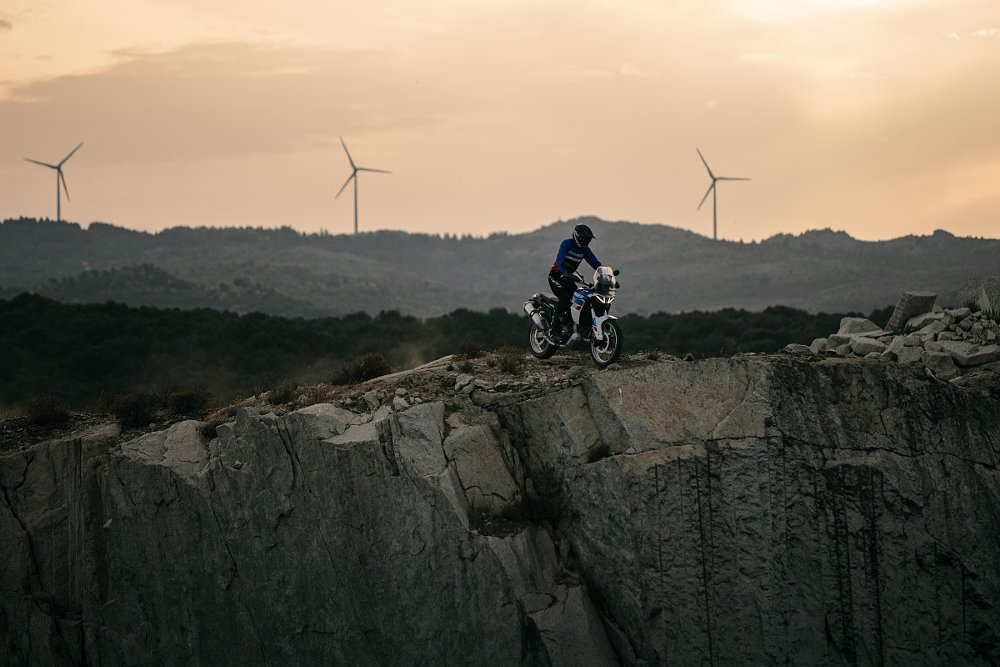
Tua-What?
Tuareg is the name of a tribe of people in Northern Africa, and they’re also known as the Indigo people, as they famously wear dyed indigo headdresses that are so vibrant that they can stain the wearer’s skin.
Aprilia pays tribute to that with the name of what they call their "most evocative" colorway, "Indaco Tagelmust." Indaco is Italian for indigo, while tagelmust is another name for the headdress. This mostly blue paint job is also an homage to the livery on the original Tuareg, and it's a $600 option. There are two other colors (offered at no additional cost): Martian Red and Acid Gold.
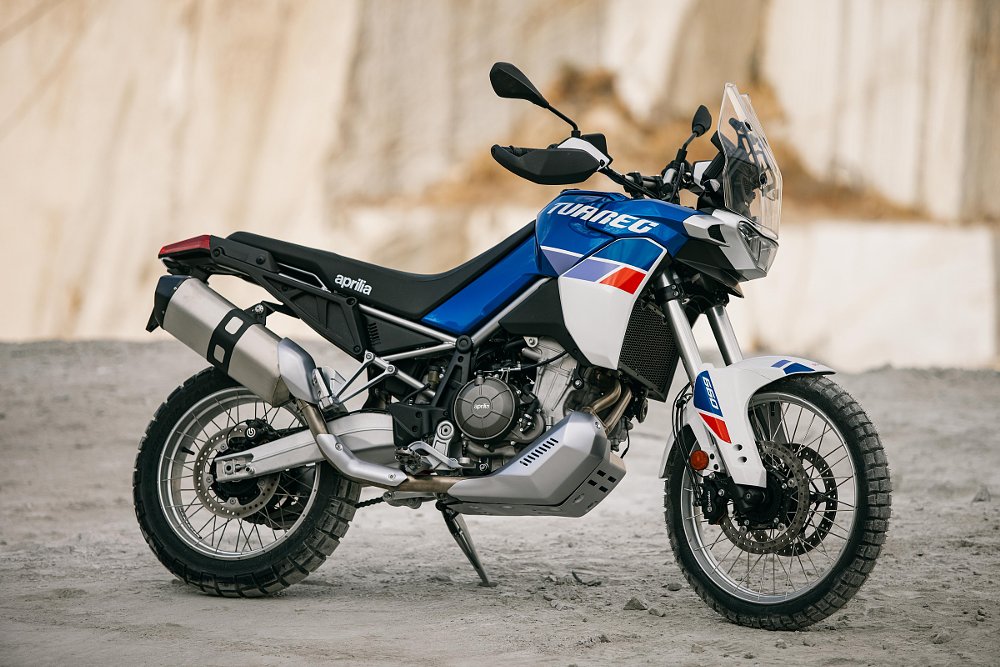
Designing the Tuareg
Inherently, a dual-sport motorcycle comes with all sorts of trade-offs, and it’s impossible for a manufacturer to please everyone as there are so many different riding styles and preferences out there. As Piero Soatti, Aprilia's Head of Motorcycle Engineering, said in his presentation, his marketing department gave him the "very tough task" of combining the best features of large adventure bikes (fuel range, luggage capacity, advanced electronics, comfortable ergonomics, wind management) and small enduros (light weight, good gas mileage) while hopefully minimizing the drawbacks that come with both platforms.
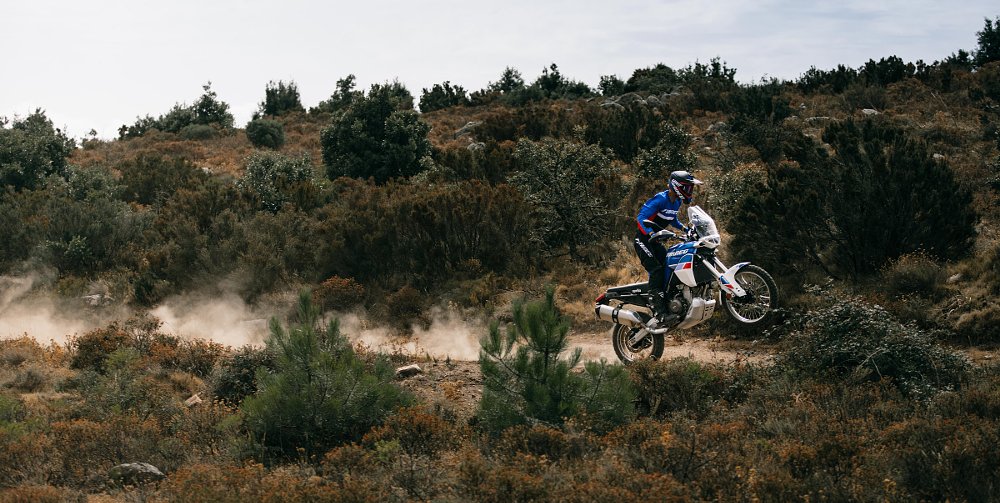
But that’s a known problem when it comes to dual-sports and their demanding consumer base. What I found more surprising was Aprilia’s consumer research on how motorcyclists have changed since the Tuareg was last around.
"In the 1980s, 'competition' was about beating other people. Now it’s about… challenging yourself and being better than you were yesterday," said Barelli.
Aprilia's not trying to take a page out of KTM's "Ready to Race" playbook. They want to give their owners the ability to "discover new scenarios, reach enchanting places, and never stop the fun."
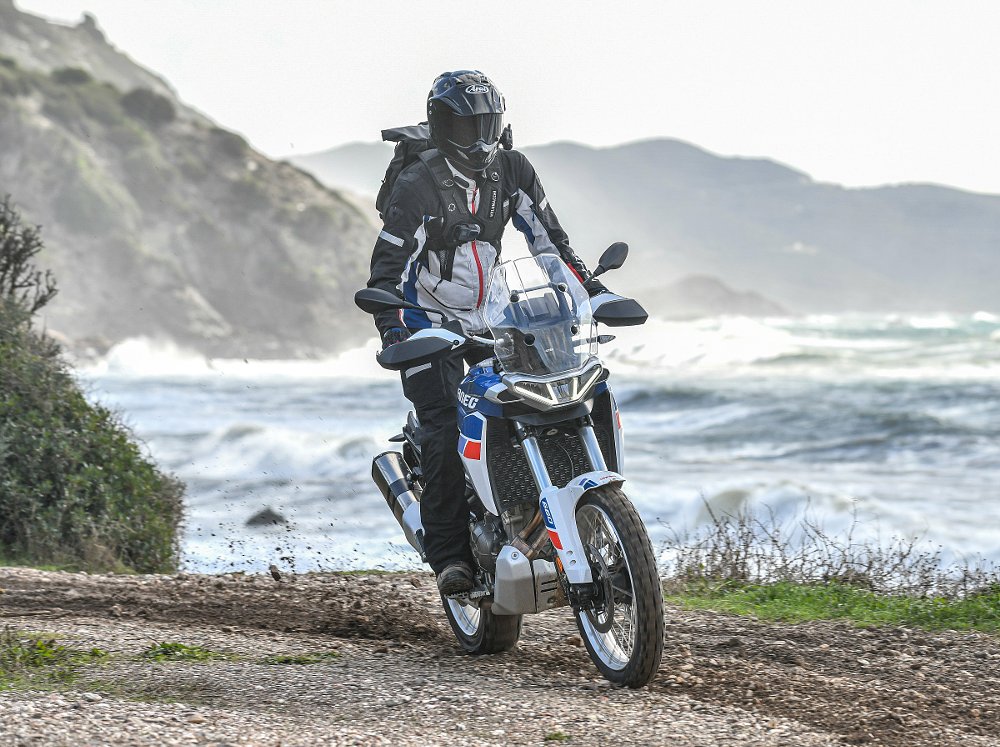
With that framework in mind, let's look at the design choices Aprilia made to build their newest model.
It's fairly obvious from the model name that the Tuareg 660 uses the same 658.8 cc parallel twin engine in the RS 660 and Tuono 660 — though that's just about the only significant component the Tuareg shares with its street siblings. Most of the specs are the same, and I’ll ask that you look at Ari’s RS review for more details if you're not familiar with the drivetrain. With that said, Aprilia has made several changes to the top end to make the engine better suited for off-road duty.
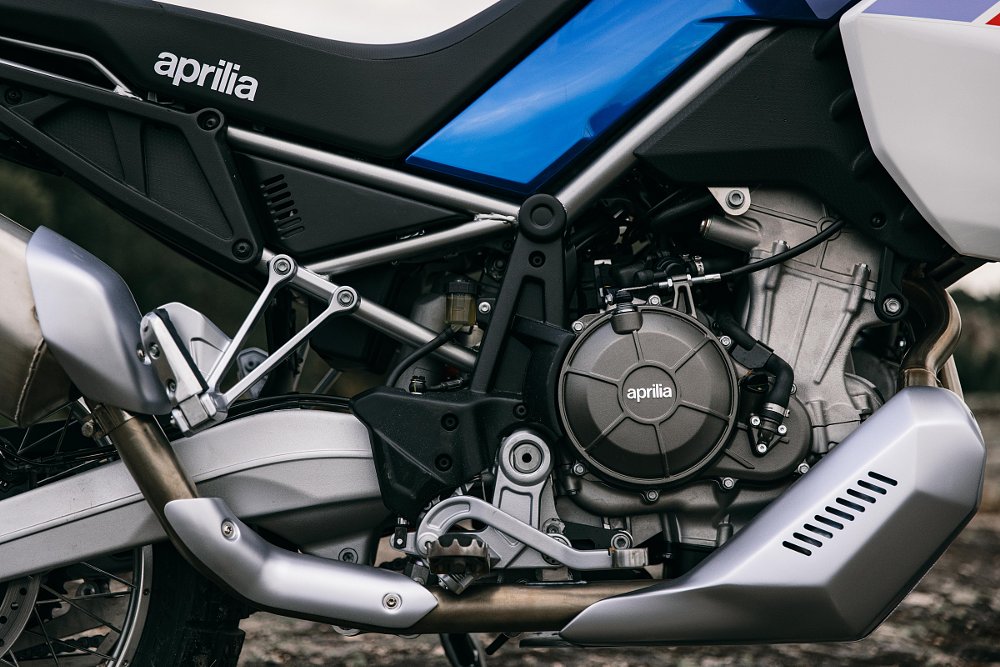
In RS guise, the engine makes 100 horsepower at 10,500 rpm and 49.4 foot-pounds of torque at 8,500 rpm. In the Tuareg, it makes 80 horsepower at 9,250 rpm (1,250 rpm lower) and 51 foot-pounds of torque at 6,500 rpm (2,000 rpm lower). The trade-off of losing 20 peak horsepower to gain 2.6 peak foot-pounds is jarring at first, though Aprilia would surely want me to remind you that these changes are about more than peaks. Rather, you should channel your inner calculus teacher and think about the area under the curve. Now you get 75 percent of peak torque at 3,000 rpm and 90 percent of peak torque at 5,500 rpm, so there’s significantly more of it down low where you want it. As was mentioned in a slight mistranslation that I enjoyed, it's all about making the Tuareg more "prompt" when leaving stop lights or in off-road situations where you want to quickly change directions with the throttle.
Helping the "promptness" are changes to the transmission: first gear is now five percent shorter and the final drive is 10 percent shorter — a change of sprocket sets to 15/42 from 17/43. The engine has been rotated backward nine degrees with respect to the RS/Tuono, and there’s a new oil sump with different oil passages and a conveyor system to ensure that the oil supply is correct even when off-road. Feeding all of this is a new airbox with much longer funnels starting at the top of the tank.
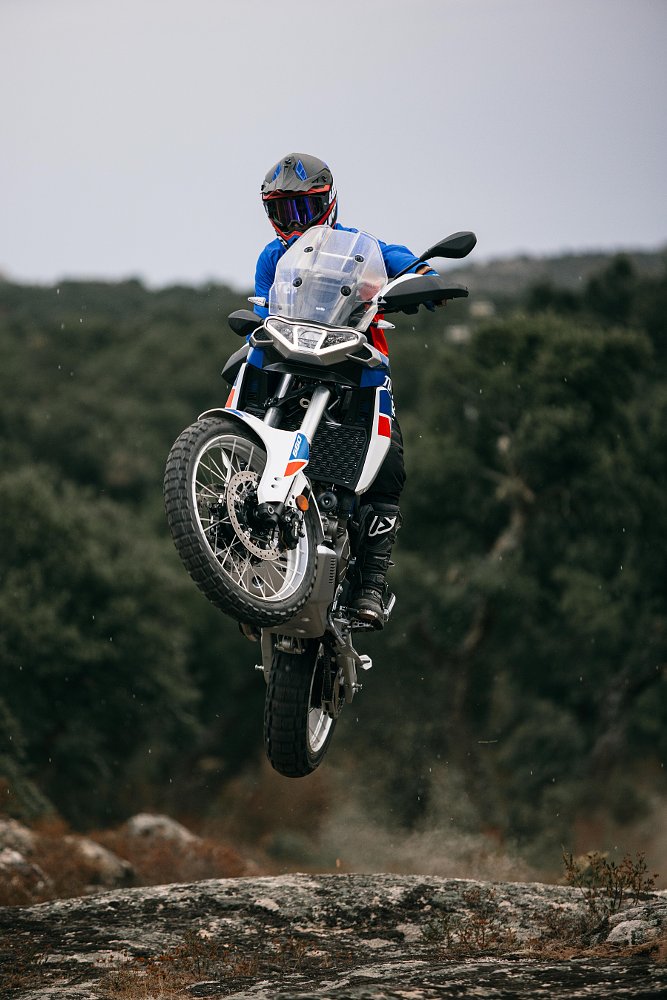
Keeping all that weight suspended are fully adjustable Kayaba (KYB) components: a 43 mm fork up front and a progressive shock in the back. Both ends have 9.45 inches of suspension travel, and (unlike with the Tuono) the Tuareg has springs in both fork legs. The result is 9.5 inches of ground clearance.
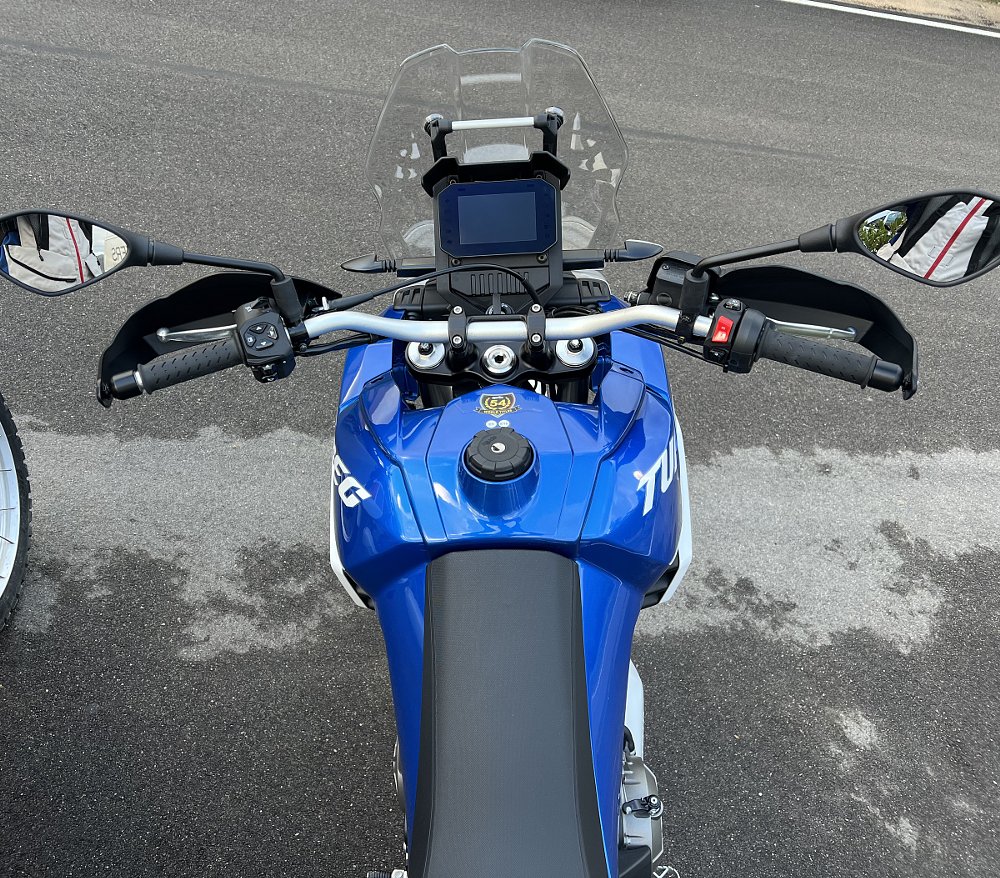
Senior Designer Mirko Zocco admits that the front-end styling is polarizing, however the headlight offers a new take on Aprilia’s traditional three-headlight look. I'd argue the rear third looks a little unfinished, but when adorned in Indaco Tagelmust the plastics look fantastic. The whole package looks purposeful, with enough elements to make you feel like every journey should be long and off the beaten path.
The fit and finish was strong, with no panel gaps or overly cheap parts to note. There wasn’t much sample size, but it also looked like the Tuareg might crash OK, as several bikes showed cosmetic damage from previous waves of reviewers but the panels were all intact and the components were still in place.
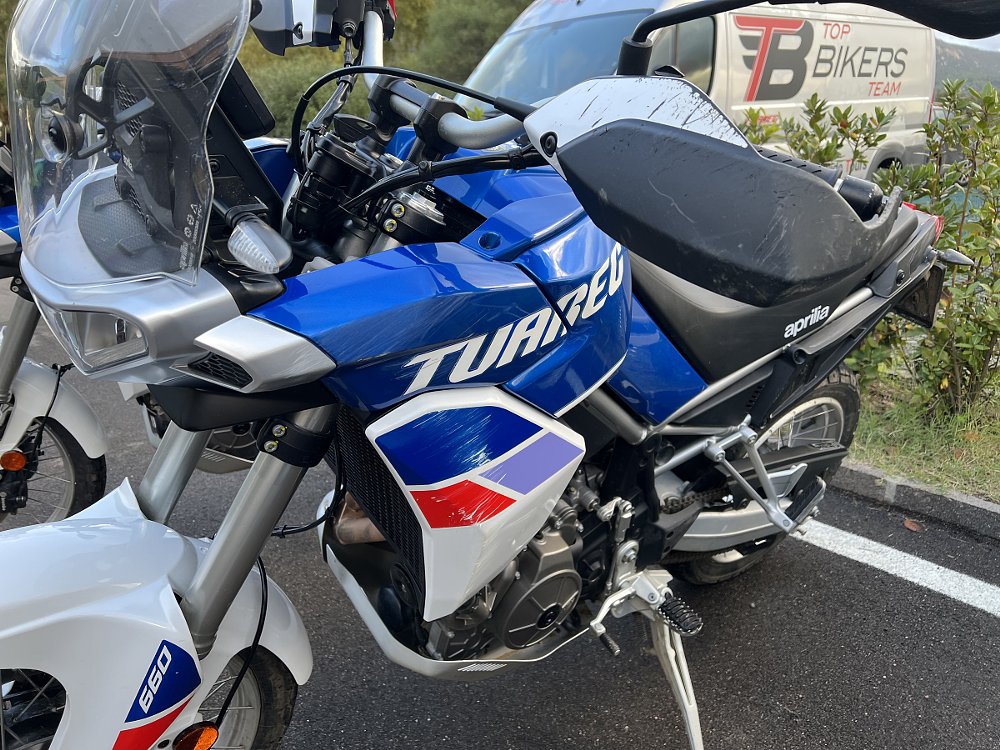
We were given a quick explanation about the ride modes and taught how to set them up through the five-inch TFT dash. There are four ride modes, three of which are pre-set: Urban, Explore, and Off-Road. The fourth mode is called Individual, and it lets you tweak settings for engine braking, traction control and throttle response. While throttle response is adjustable, each mode offers full power.
The dash is easy to manipulate with controls on the left grip, and a small sun visor helps ensure that it is easy to see no matter the angle. Aprilia deserves kudos because they make it very easy to change ride modes, traction control, and ABS settings on the fly and the status of any setting is easily confirmed visually on the dash.
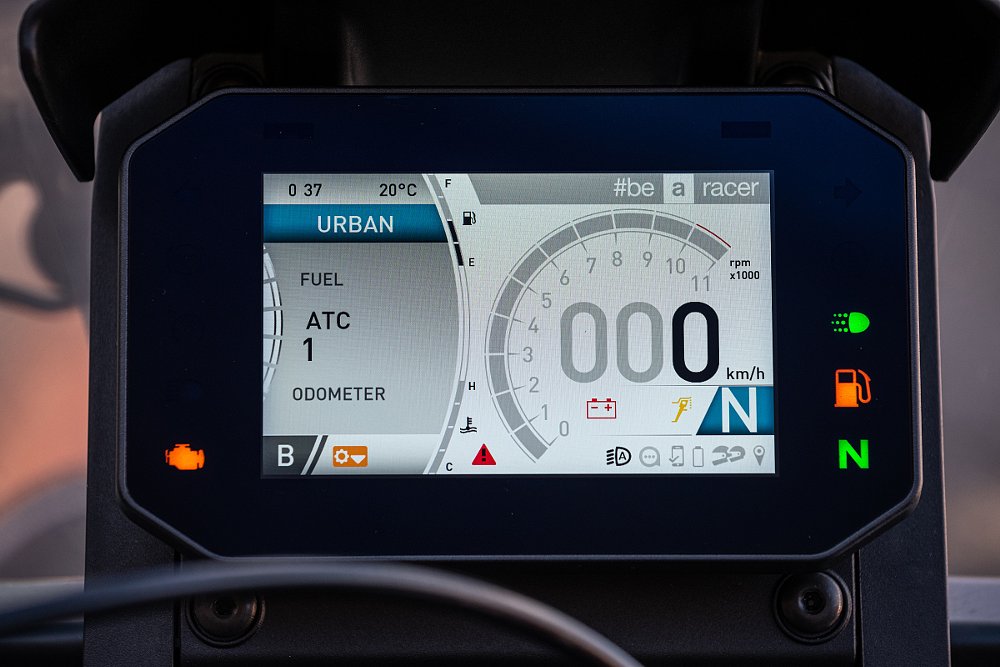
Riding the Aprilia Tuareg 660 on the road
Our day started on a twisty road following the coast of southern Sardinia. Many corners were reminiscent of the best parts of the Pacific Coast Highway, but the road was much narrower than anything that would be allowed in the United States. Immediately, I was stunned by how well the Tuareg handled on pavement, especially considering the usual drawbacks of having a 21-inch front wheel with a 50/50 tire. You can ride it sportbike style with your knee out or supermoto style with your foot out — either way, the light weight and wide handlebar reward you with easy turn-in and above-average stability when holding a line.
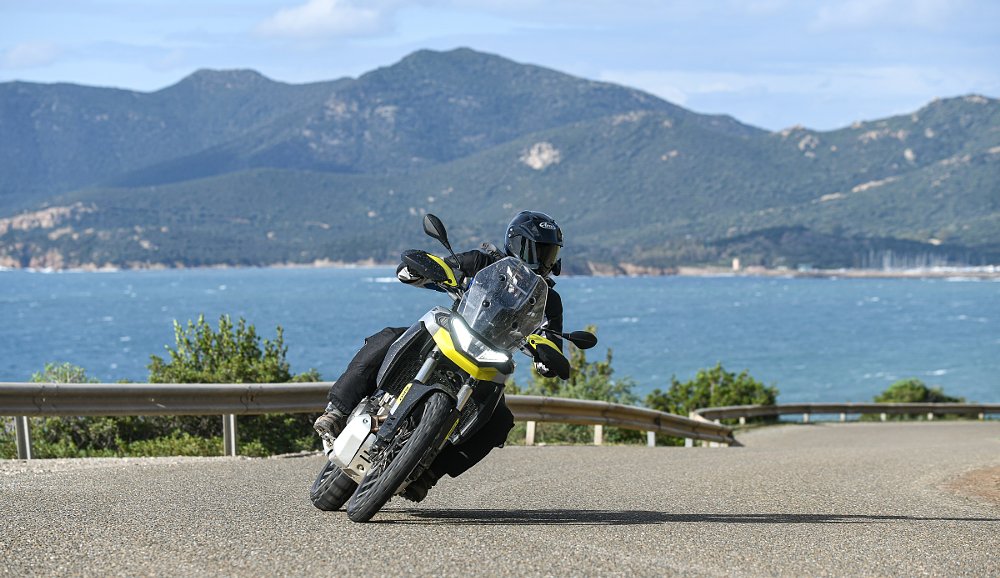
I occasionally found the front end to be a little too light for my taste as there was a small shimmy when going around mid- to high-speed corners. Most of this was eliminated with the introduction of more preload in the shock as the stock setting is too soft and it keeps too much weight on the back wheel.
I alternated between the Urban, Explore and Individual ride modes. Urban is the smoothest and slowest, but the Tuareg is easy enough to ride that there’s no need to use Urban, even in heavy rain. I set the Individual map to be as aggressive as possible, and while the immediate power delivery was more enjoyable, the maximum engine braking setting doesn’t cooperate well with throttle when just cracking it open or almost fully closing it. It makes for jerky transitions when attacking sequences of corners. Explore was the best overall map for day-to-day riding… or exploration.
The Tuareg transmits more vibration to the rider than the RS or Tuono, and that is likely because of this model's six engine mounting points, instead of two or three. You feel it in the handlebar and the pegs more than in the seat, though there's also enough coming through up to the mirrors that they're rendered basically useless above 7,000 rpm. You can tell there’s a car behind you, but you can’t tell what kind of car it is. There’s no specific point in the powerband where the Tuareg feels silky smooth to me, but the vibration never gets oppressive, either.
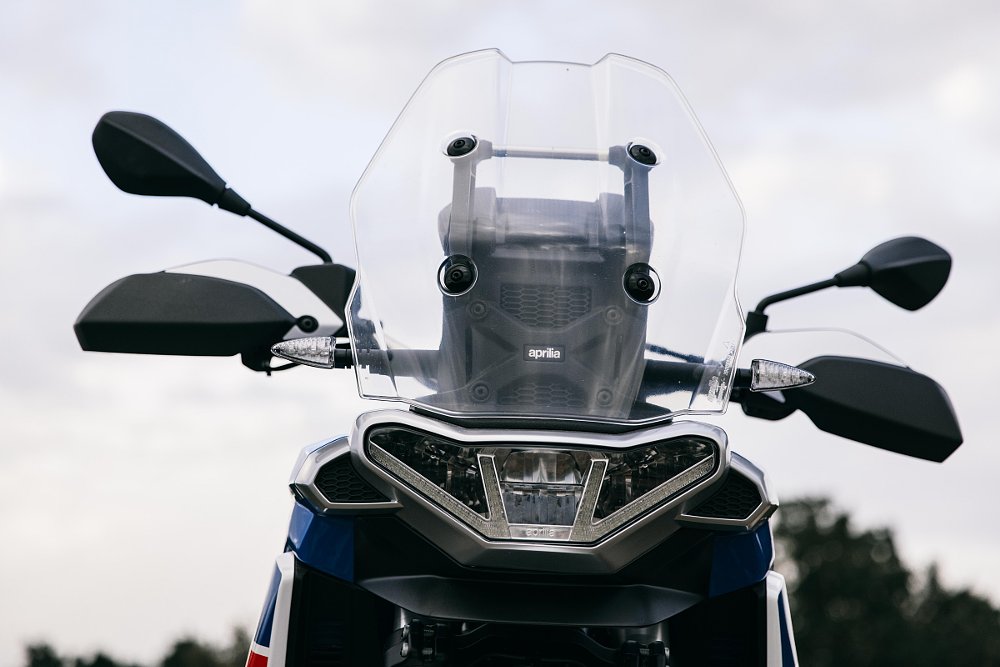
Also not as smooth as it should be is the optional quickshifter, which is unhappy when called upon if the engine is on low load. It feels best only when you've got the throttle pinned. Shifting manually is fine. Feel from the shifter is good and feel from the cable clutch lever is adequate, though it's non-adjustable.
On the other side of the handlebar, the front brake feel is excellent, though the axially mounted Brembos lack bite compared to the Tuono and RS. That's a concession for the dirt, though the Tuareg also unfortunately lacks the IMU that's standard in the RS and optional in the Tuono. I presume that Aprilia didn't want to invest in re-calibrating features like the lean-sensitive ABS or traction control for off-road situations, but this feels like a puzzle missing one final piece, considering all the other technology this bike packs (and the fact that the Tuareg website boasts about having "the most advanced technology available to serve any impulse to adventure."
Despite that, the Tuareg is genuinely a joy on pavement — it’s much more enjoyable than the specs on paper would suggest. There were a few moments where I wished for some of the 20 missing horses back, but the handling more than makes up for it. The Tuareg could easily hang with middleweight street bikes in all but the fastest of sweepers, but it can also turn off the main road and get dirty at a moment’s notice.
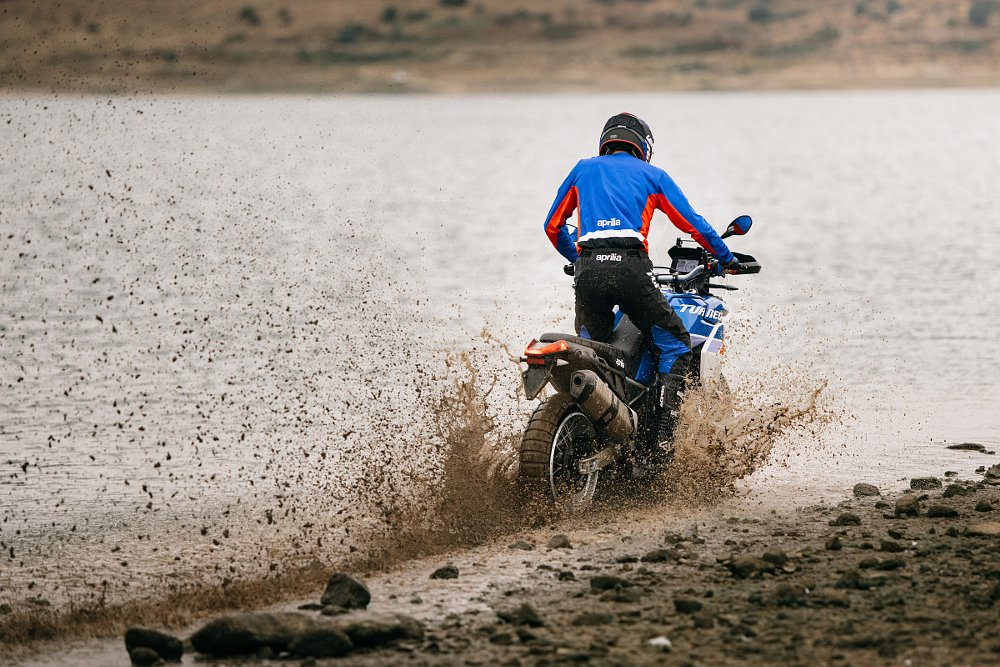
Riding the Aprilia Tuareg 660 off-road
I genuinely did not know what to expect with the Tuareg off pavement, but it’s incredibly competent thanks to the narrow frame, above-average suspension, light weight, and Off-Road ride mode. The last feature turns off traction control and rear ABS by default. You can manually shut off the front ABS, but Aprilia recommended we keep it on and I never felt the need to stray from that on the trails. You can adjust the height of the rear brake pedal by flipping the end, but either way I felt it was a little too easy to lock up the rear wheel.
The shape of the tank and the seat make it incredibly easy to stand up and sit down as needed, though if I owned this bike I’d be springing for the optional bar risers to better fit my six-foot, three-inch frame. I’d also order some grip pads for the tank, because I thought it was very difficult to grab the tank with the inside of my legs. Getting grip on the pegs is easy once you remove the rubber inserts.
While there were a few instances when I wanted more power on the street, I was never once wanting for power in the dirt. The Off-Road ride mode is well tuned for the application with predictable power delivery, making it easy to modulate and break the rear loose to help get the front end around or just to goof around.
The suspension felt soft initially and if I had more time with the Tuareg I'd look to add a couple of clicks of compression and rebound in both ends. Still, the progressive linkage shock stiffens up nicely to soak up bumps and prevent bottoming out as long as you're not hitting sharp bumps at high speed.
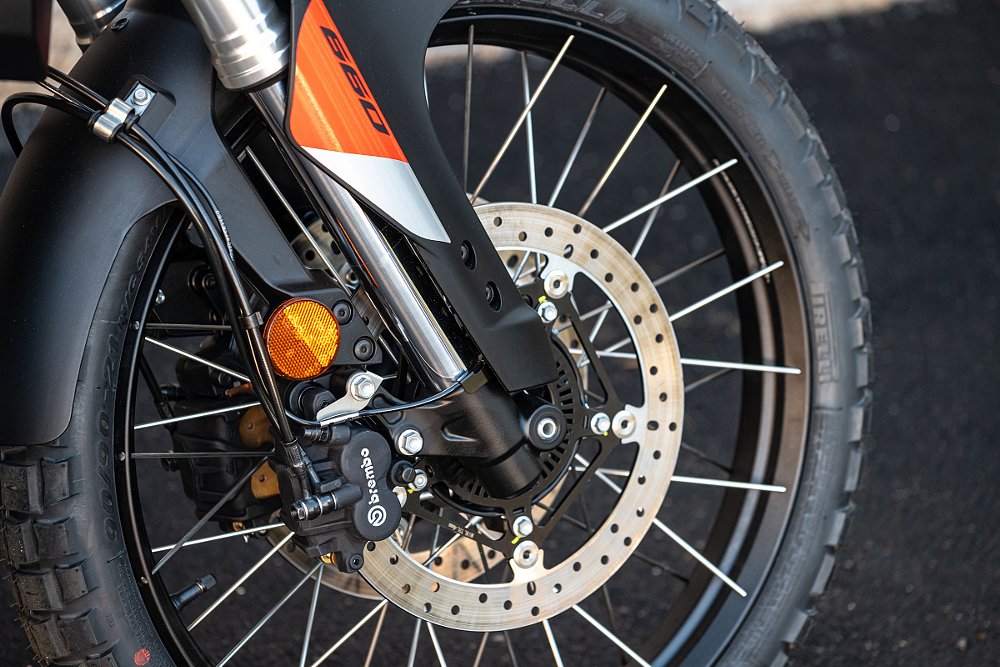
I'm pleased to report that the 21-inch front and 18-inch cross-spoked wheels are designed for tubeless tires, which will make the occasional plug job much easier. The stock tires are Pirelli Scorpion Rally STRs, and they were up to the task for the variety of surfaces we tackled during the day.
I’d consider myself an intermediate off-road rider and the Tuareg is more capable than I am. The reason I enjoy it so much is because the seat height and shape and the light weight mean that it's easy to bum around with slow-speed technical riding and the power and suspension mean it's capable when you want to go fast or climb hills. The Tuareg is easy to ride for its size, and that means I'm more willing to explore unknown routes… isn’t that the whole point?
When things go wrong, the Tuareg comes stock with protection that would be sufficient for your average rider, such as plastic hand guards and skid plates for the engine and headers, but if you ride like Aprilia's model below then you'll want to reinforce the above and add tap into some optional extras.
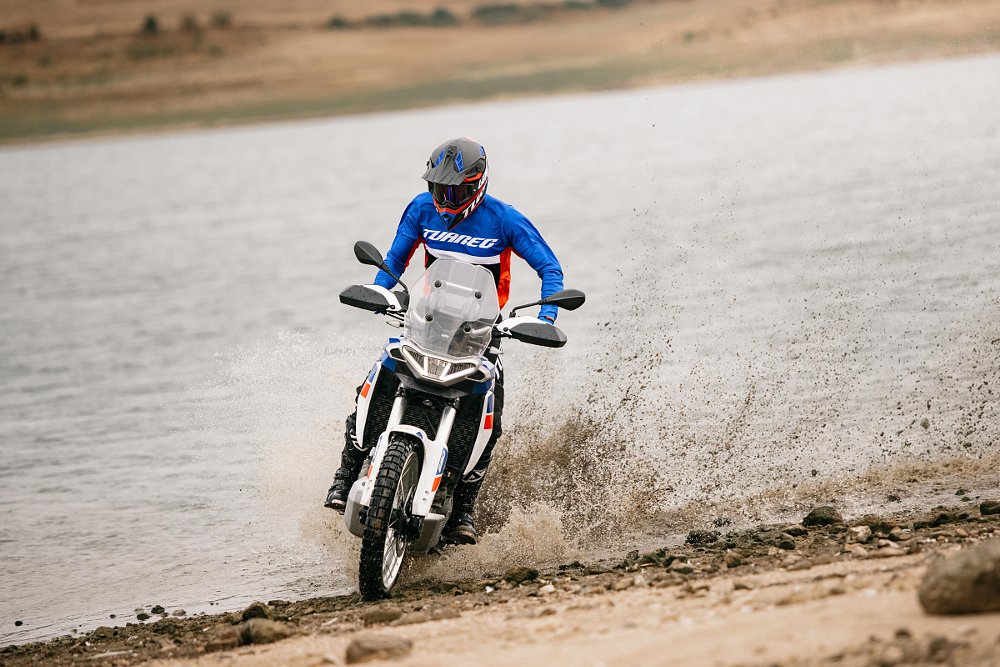
Aprilia is offering a wide range of accessories for the Tuareg that can be split up into three categories. Adventure riders can purchase aluminum saddlebags and a trunk, bag liners, a rear rack, engine crash bars, LED fog lights, a center stand, and a chain guide.
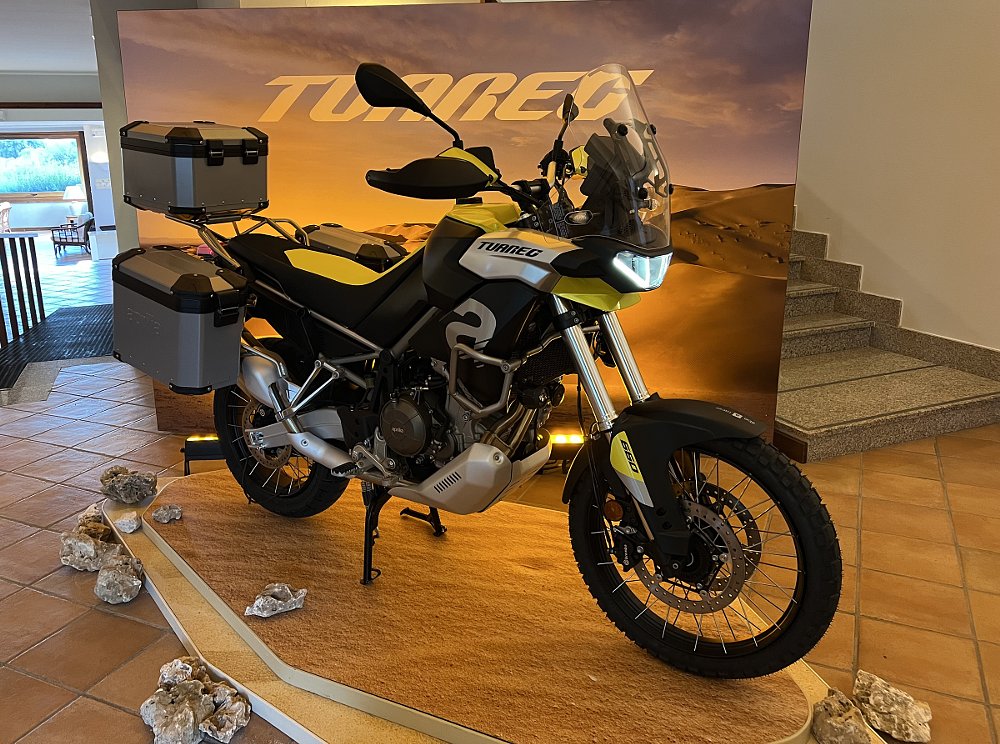
On the Touring side, they offer "urban" luggage (the same as what's on the Moto Guzzi V85TT) a larger windscreen, thicker seat, and handlebar riser. Lastly, there's some Technical options: MIA multimedia platform to connect your phone, quickshifter, anti-theft system, and heated grips. All of the above accessories are sold individually, and Aprilia's also got some Tuareg-branded dirt and touring riding gear available.
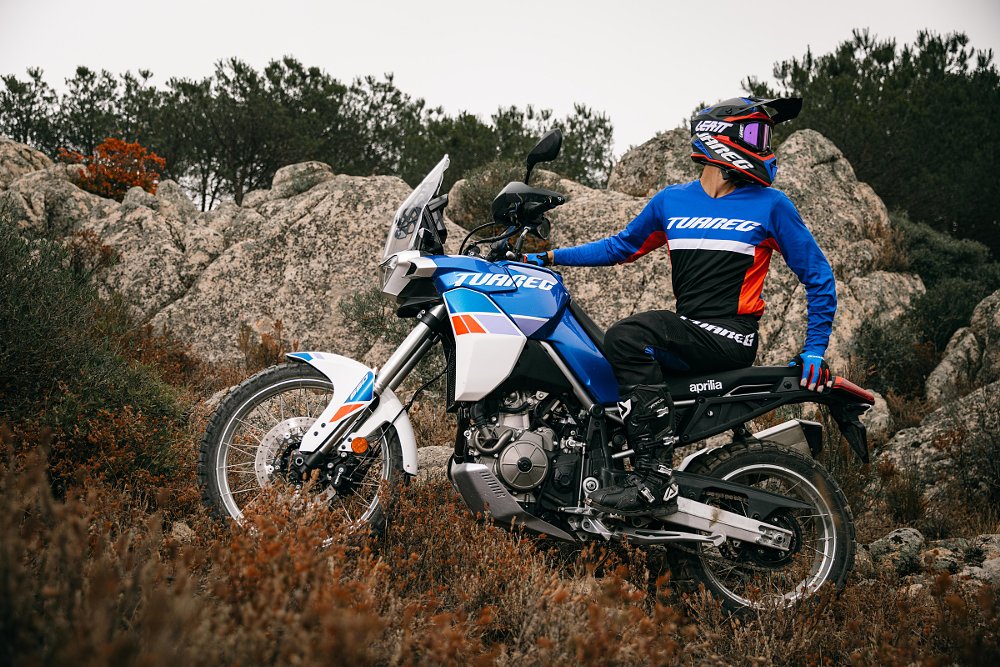
For my needs (commuter, monthly two-to-three-day trips, annual two-week trip), I’d get a Tuareg with bags, crash bars, and heated grips. I'd also look into a taller windscreen as the stock shield ends up directing air right at the leading edge of my helmet peak, resulting in a tiny amount of noise and pressure but thankfully no buffeting.
The vain part of me would also cough up the extra $600 for the Indaco Tagelmust livery, because I think it elevates the Tuareg from looking a little plasticky to being one of the best looking bikes in its class.
Tuareg competition
I don’t think it's fair for me to compare this to other bikes that I wasn’t able to ride back-to-back, but I also know that many people are going to ask how the Tuareg 660 ($11,999) compares to the KTM 890 Adventure ($13,099) as well as the Yamaha Ténéré 700 ($9,999). The short answer is, very favorably. The Aprilia slots in between both bikes in terms of price and features, though it's much closer to the KTM. If I'm going off memory, I'd say the Tuareg is better on- and off-road than the Yamaha (which it should be, for the price), but it's also better than the KTM off-road. You'd need to step up to the 890 Adventure R ($14,199) and you’ll get a much nicer suspension, but even then you'll have to pay extra for features that are standard on the Tuareg, like cruise control and adjustable traction control and throttle response. Of course, the KTM has a bigger motor and an IMU, but I’m just trying to illustrate that the Tuareg is an impressive new bike that's punching up in its class.
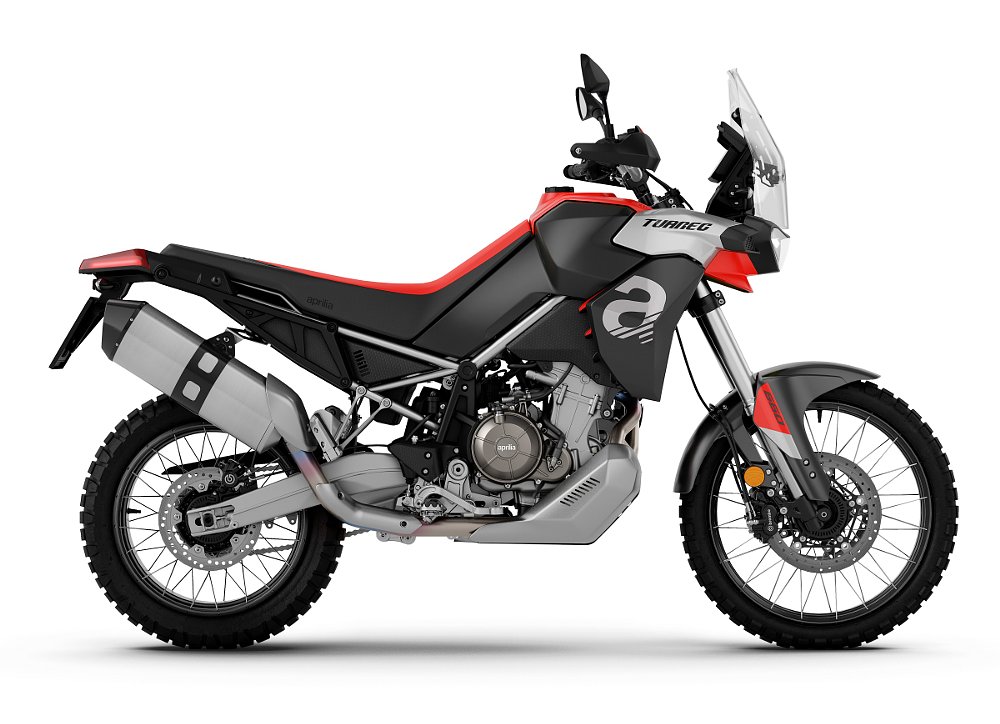
Final thoughts on the Tuareg 660
I was very impressed by the Tuareg in my limited time with it. Aprilia’s only claim that I couldn’t verify was gas mileage: They say you can expect 58.8 miles per gallon, but I was seeing values in the mid-40s. (I was admittedly very aggressive on the throttle most of the day.) My complaints are minor — the optional quickshifter is underwhelming, the engine braking programming isn't perfect, and it should have an IMU, but none of those would stop me from putting a Tuareg in my garage as a daily commuter and occasional travel steed.
In fact, my biggest issue with the Tuareg isn’t actually with the bike itself. I really try not to be the person who screams out "but dealer support" when some companies release a new motorcycle, but the Tuareg is a bike that’s designed to explore and likely end up in some remote areas. I live in Los Angeles and have two Aprilia dealerships within 20 minutes of my home, so I assume I can find parts or whatever I need with relative ease. But what if I'm on the road? My flight back home from Sardinia included a layover at Hartsfield-Jackson International Airport in Atlanta, Georgia, the busiest airport in the United States. As an experiment, I went to Aprilia’s Dealer Locator and was surprised to find that even though I was in a metro area of roughly 4.5 million people, the closest dealership was 187 miles away in Tennessee.
If you can get over that, then I heartily recommend the Tuareg because Aprilia has built a motorcycle that can take you long distances over a variety of terrains in comfort and with some style. Most importantly, you'll have a lot of fun in the process because it's so easy to manage.
The Tuareg fills a gap in the dual-sport market between the Yamaha Ténéré 700 and the KTM 890 Adventure R that I think many riders will be intrigued by. If you’re one of said riders, you can head over to Aprilia’s site to pre-order the 2022 Tuareg 660. The first units will arrive in the United States in February 2022 (March 2022 for Canada). Until then, you’ll just have to bide your time by planning your next adventure.
| 2022 Aprilia Tuareg 660 | |
|---|---|
| Price (MSRP) | $11,999; $12,599 for Indaco Tagelmust version |
| Engine | 659 cc, liquid-cooled, eight-valve, parallel twin |
|
Transmission, final drive |
six-speed, chain |
| Claimed horsepower | 80.0 horsepower @ 9,250 rpm |
| Claimed torque | 51.6 foot-pounds @ 6,500 rpm |
| Frame | Steel trellis |
| Front suspension | Kayaba 43 mm fork, fully adjustable; 9.45 inches of travel |
| Rear suspension | Kayaba shock, fully adjustable; 9.45 inches of travel |
| Front brake | Brembo two-piston calipers, dual 300 mm discs with ABS |
| Rear brake | Brembo one-piston caliper, 260 mm disc with ABS |
| Rake, trail | 26.7 degrees, 4.46 inches |
| Wheelbase | 60.04 inches |
| Seat height | 33.85 inches |
| Fuel capacity | 4.75 gallons |
| Tires | Pirelli Scorpion Rally STR, 90/90-21 front, 150/70R-18 rear |
| Claimed weight | 449 pounds |
| Available | Pre-order now open, available February 2022 |
| Warranty | 24 months |
| More info | aprilia.com |
















